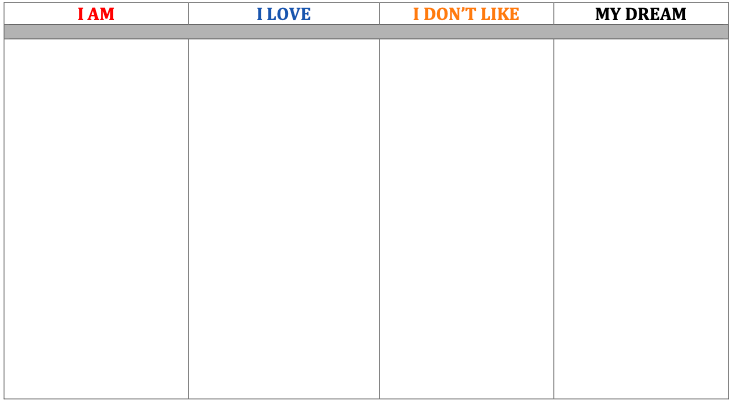I AM
A Simple Way To Learn About a Person
During my time in disability services, I found it was essential to learn about the people I served and to seek simple tools to help them express themselves. I came across a video on YouTube from the international organization L’Arche, which featured members of the L’Arche community discussing who they are, what they love, what they dislike, and what they dream about.
They were simple questions, but the responses from the L’Arche community made a powerful statement about who they were as individual human beings. In working with groups, the individual often becomes lost in the crowd. We need to empower each person to talk about themselves as individuals, and this “I AM” exercise is an excellent tool for self-expression and building confidence.
In high schools, at self-advocacy groups, and other meetings, I would ask people to answer the questions and record their responses on a blackboard or large notepad for everyone to see. Under “I AM,” I’d learn that the person was a sister or brother, a singer, a bowler, a worker, a baseball fan, a boyfriend - the responses had tremendous variety. Not once, over many “I AM” exercises, did anyone ever say that they were “disabled.” Every one of them was a person of great complexity. Answers to “MY DREAM” ranged from getting a job, their own place to live, traveling, having close friends, and more.
The point of this simple exercise is to see beyond the group label of “disabled” and to see each person as a unique, complex individual who defies broad generalizations. It also provided an opportunity for group members to learn details about fellow members in their group
This exercise can be conducted in various settings, including school classrooms, day habilitation centers, pre-employment training sessions, and meetings with care managers. It can be completed in one session or spread over a timeframe that suits you. It’s important to remember that the responses are based on a particular point in time. You could take the results and look back at them a year later, and I’m sure you’ll find that there are new responses as all of us grow and change over time.
My professional focus was on working with people with developmental disabilities, but this exercise could also be helpful in many other settings. If you’ve ever visited a nursing home and seen seniors there, wondering about their individual histories and lives, this exercise tool would help us see each person as a complex being with unique lived experiences.
I hope some of you reading about this “I AM’” exercise will try it with the people you serve. It would be great to hear from you!
Plastic Learning provides a platform for exploring practical lifelong learning opportunities for everyone, particularly those with cognitive challenges. The brain is a plastic organ that can rearrange its pathways to accommodate new information. Unless we focus on finding new methods to tap into and stimulate the brain’s plasticity, the potential of so many people may not be realized.




This would work in a variety of situations, good idea.